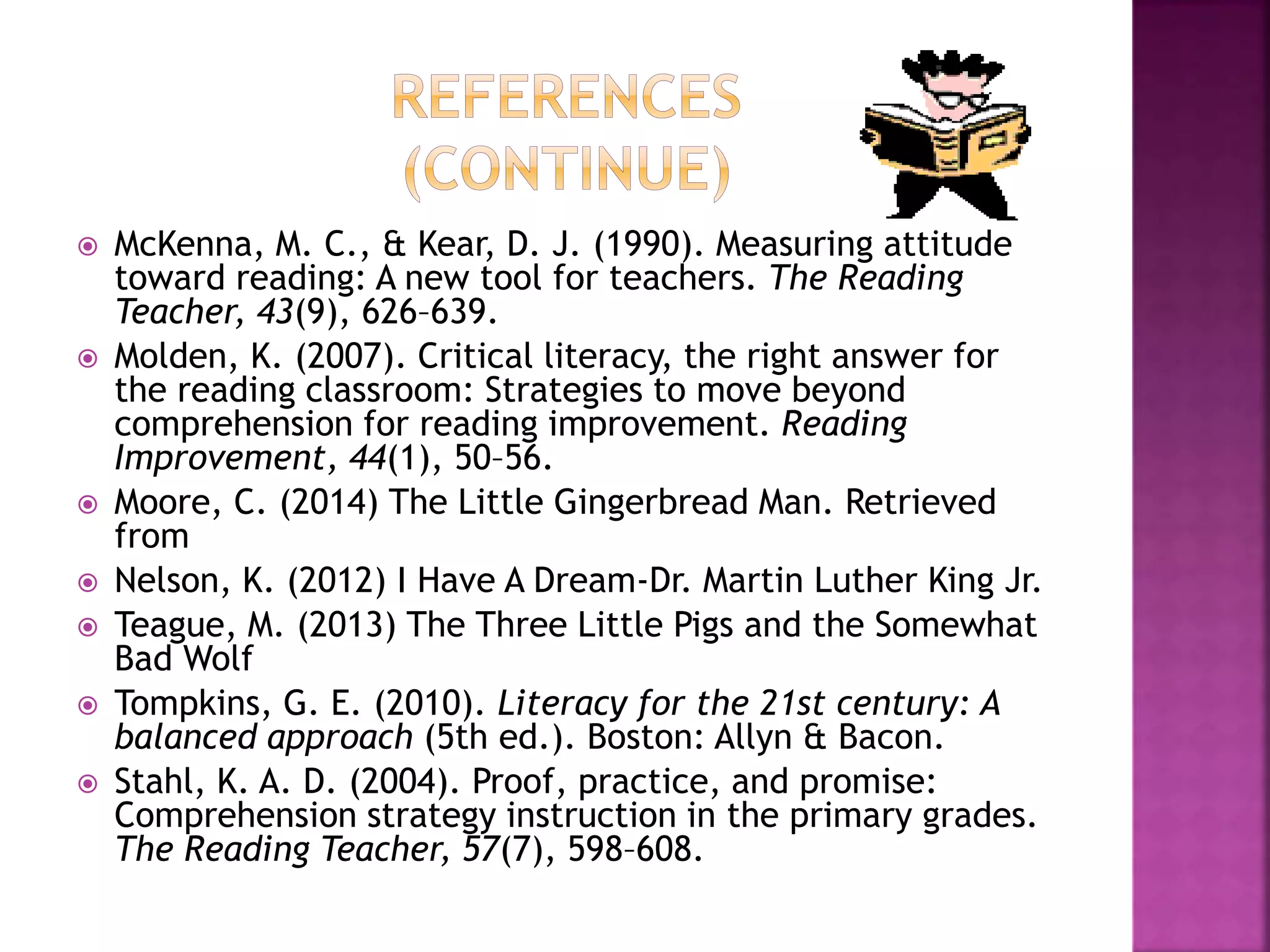This document discusses Danielle Leonard's literacy lesson plans for three PreK-3 students. It describes assessments used to evaluate the students' reading comprehension and attitudes. Cognitive assessments showed their instructional reading levels, while non-cognitive assessments evaluated recreational and academic reading attitudes. Lessons incorporated narratives, informational texts, and online texts selected based on assessment data and the Literacy Matrix tool. The lessons applied interactive, critical, and response perspectives to build reading skills and critical thinking.
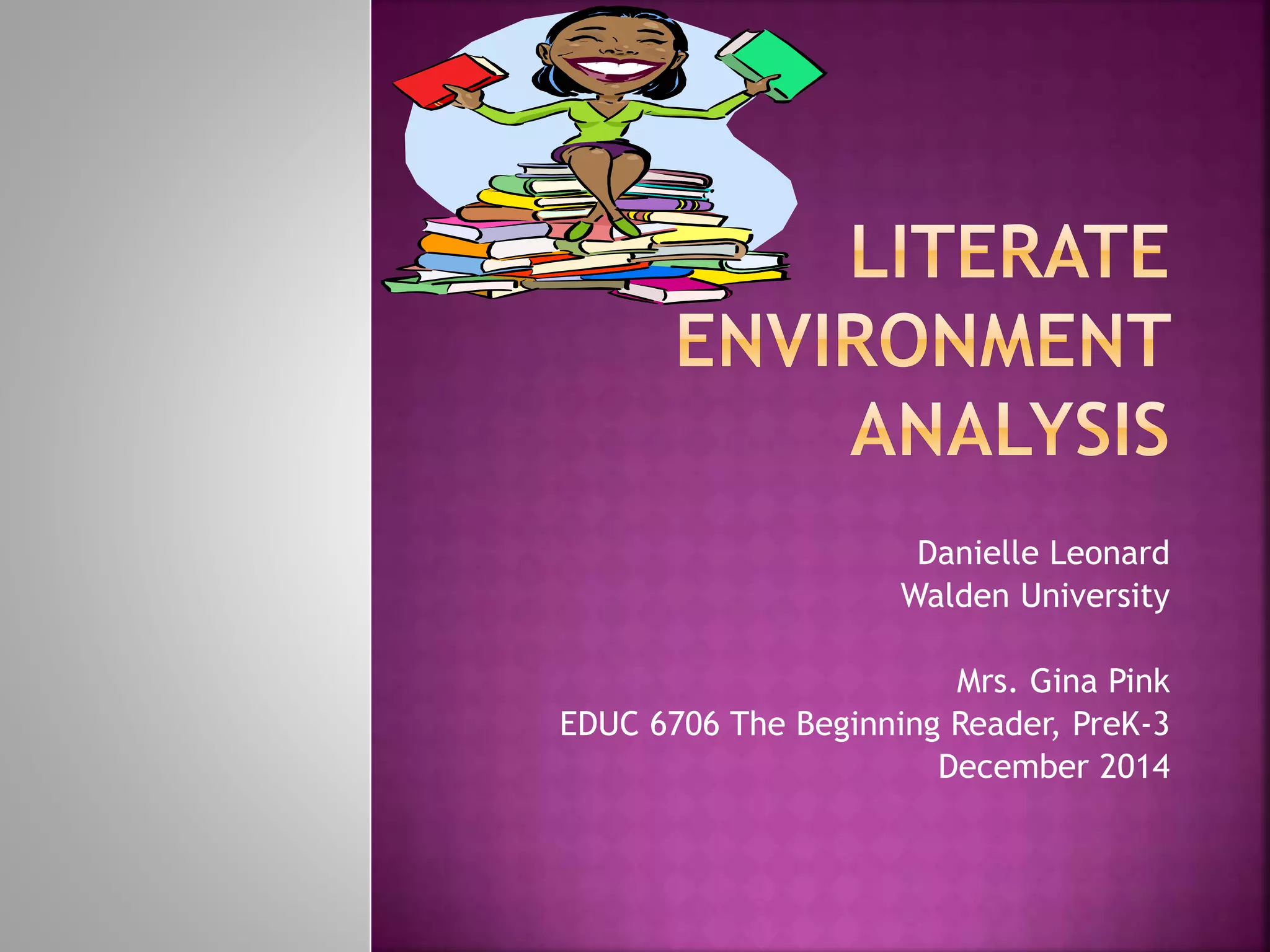

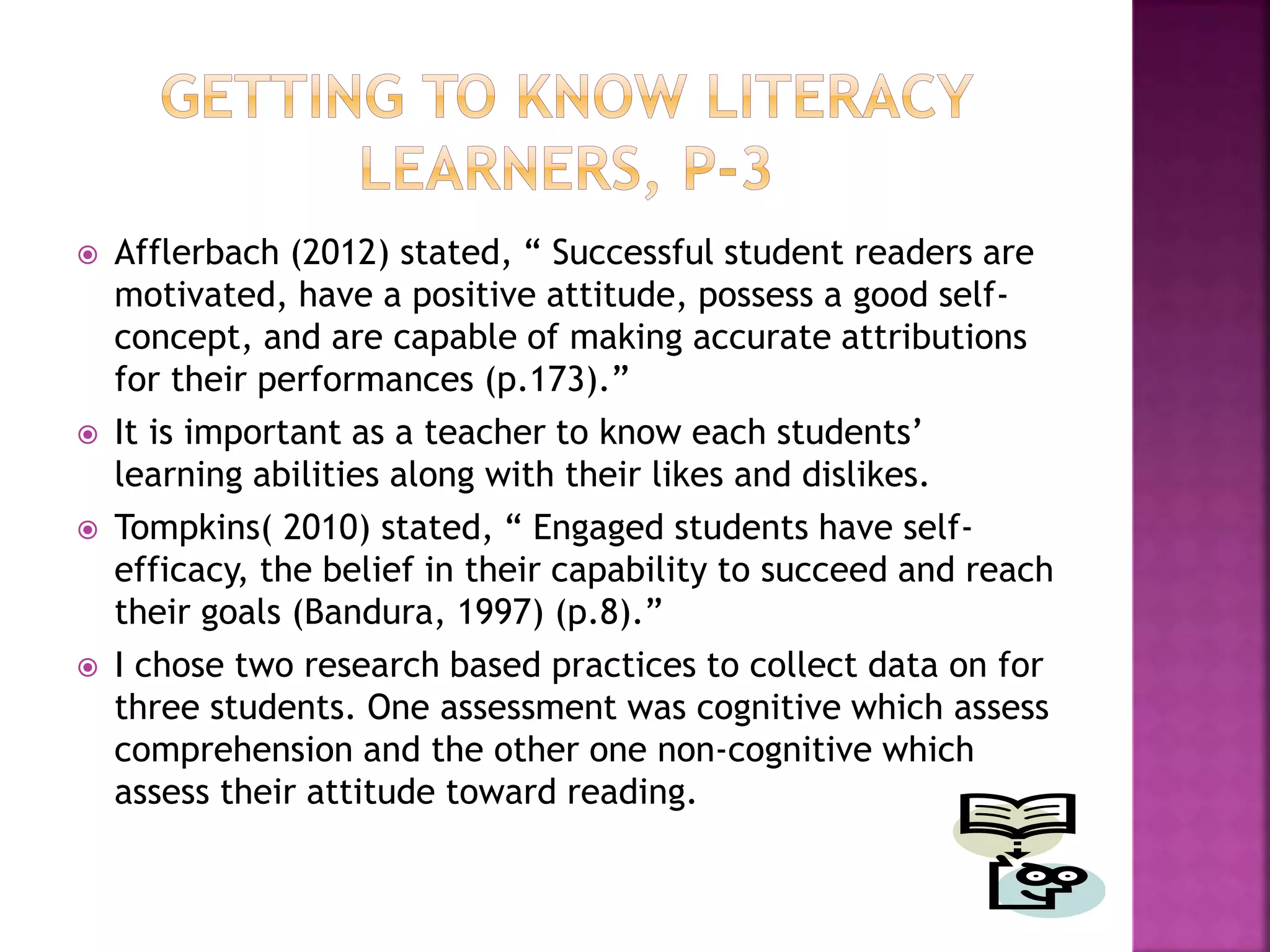
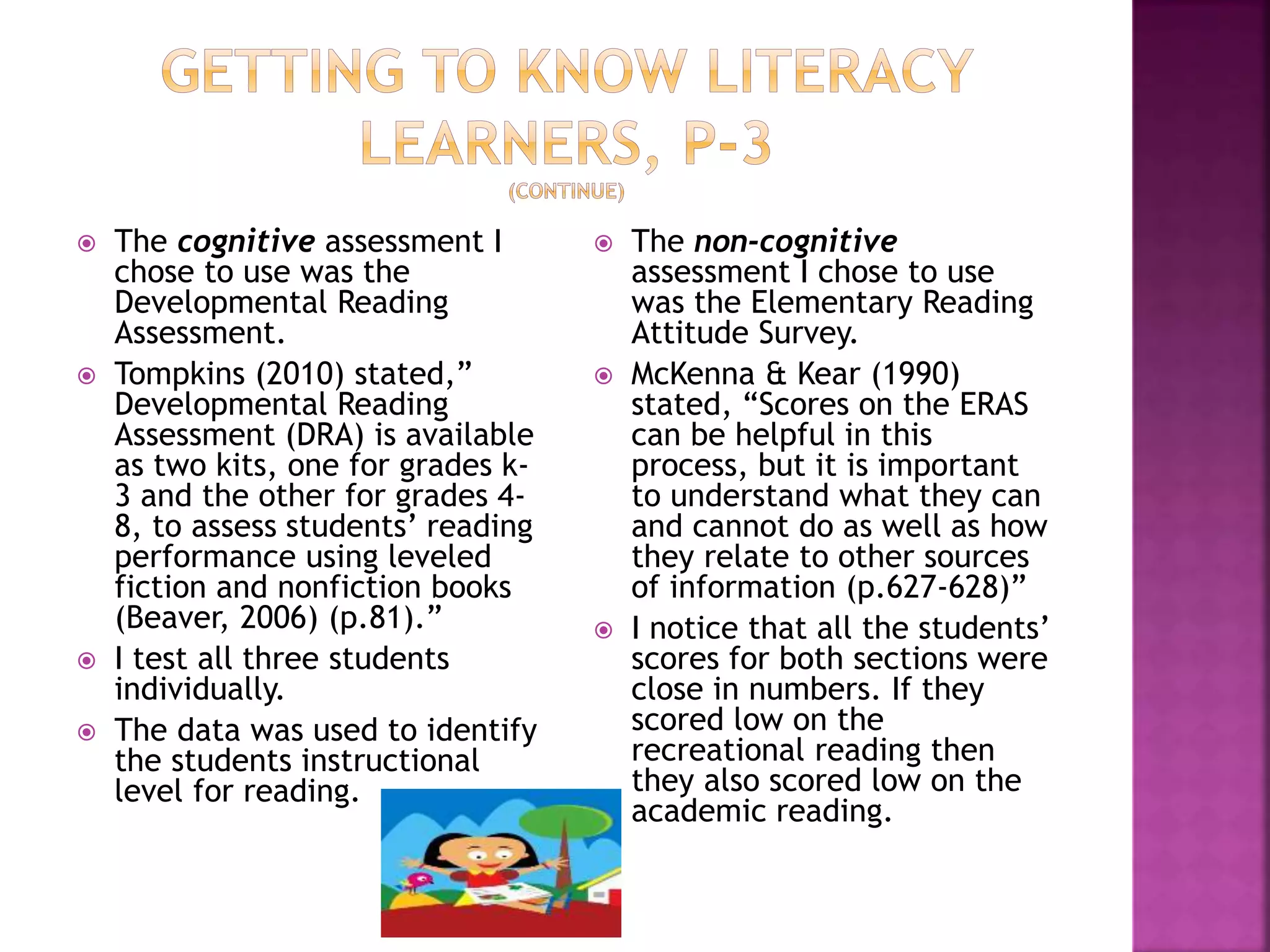
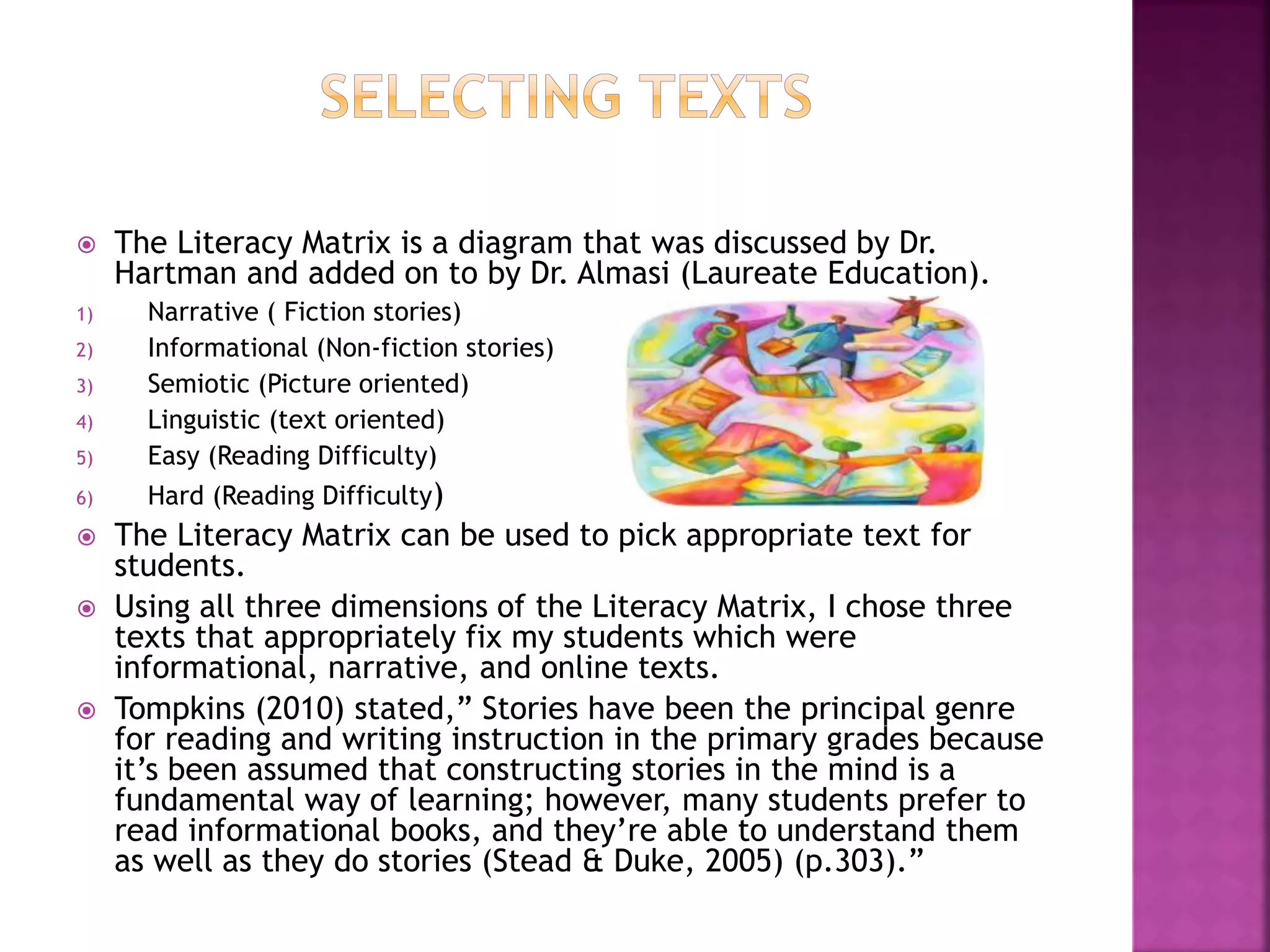
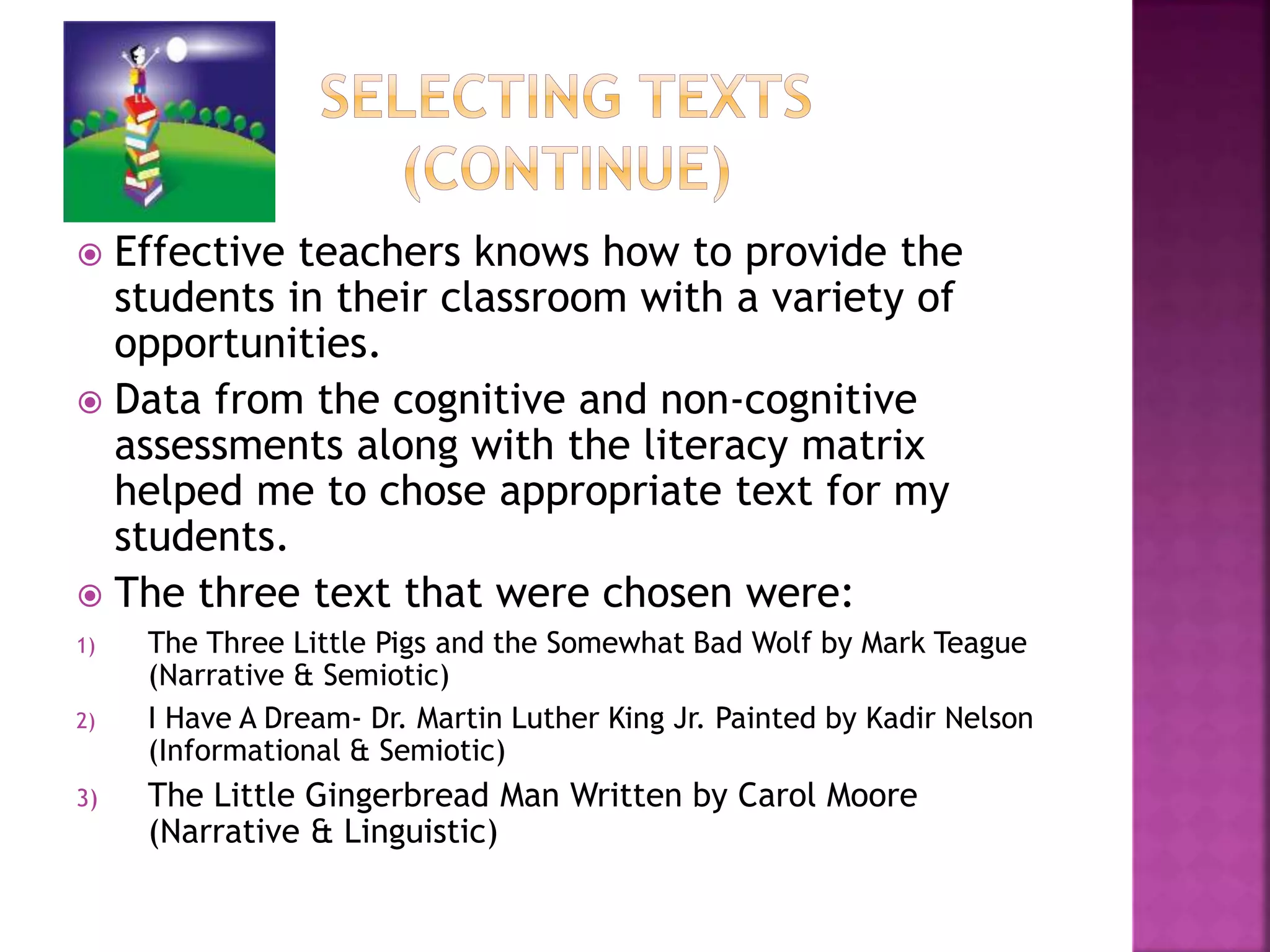
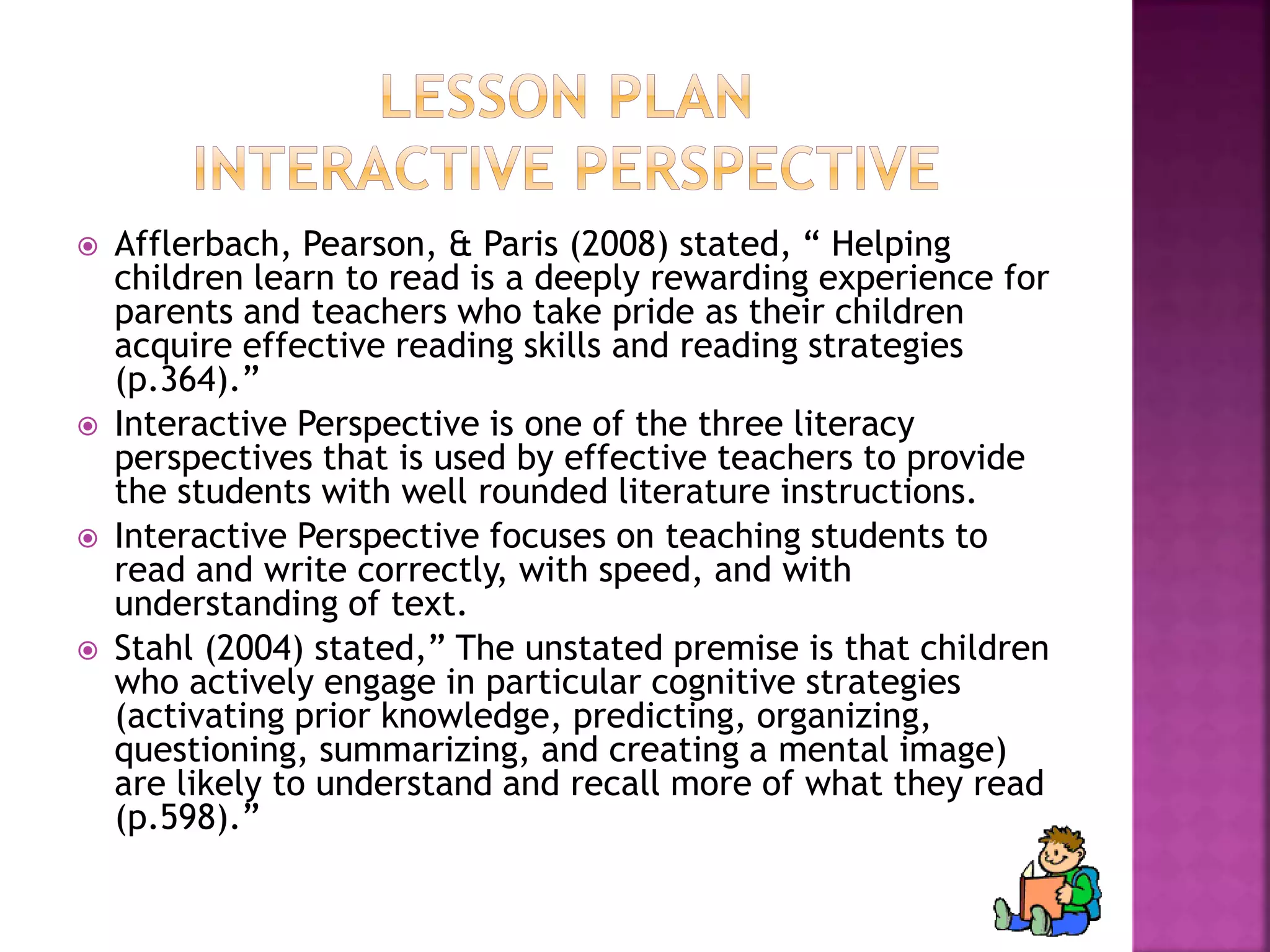
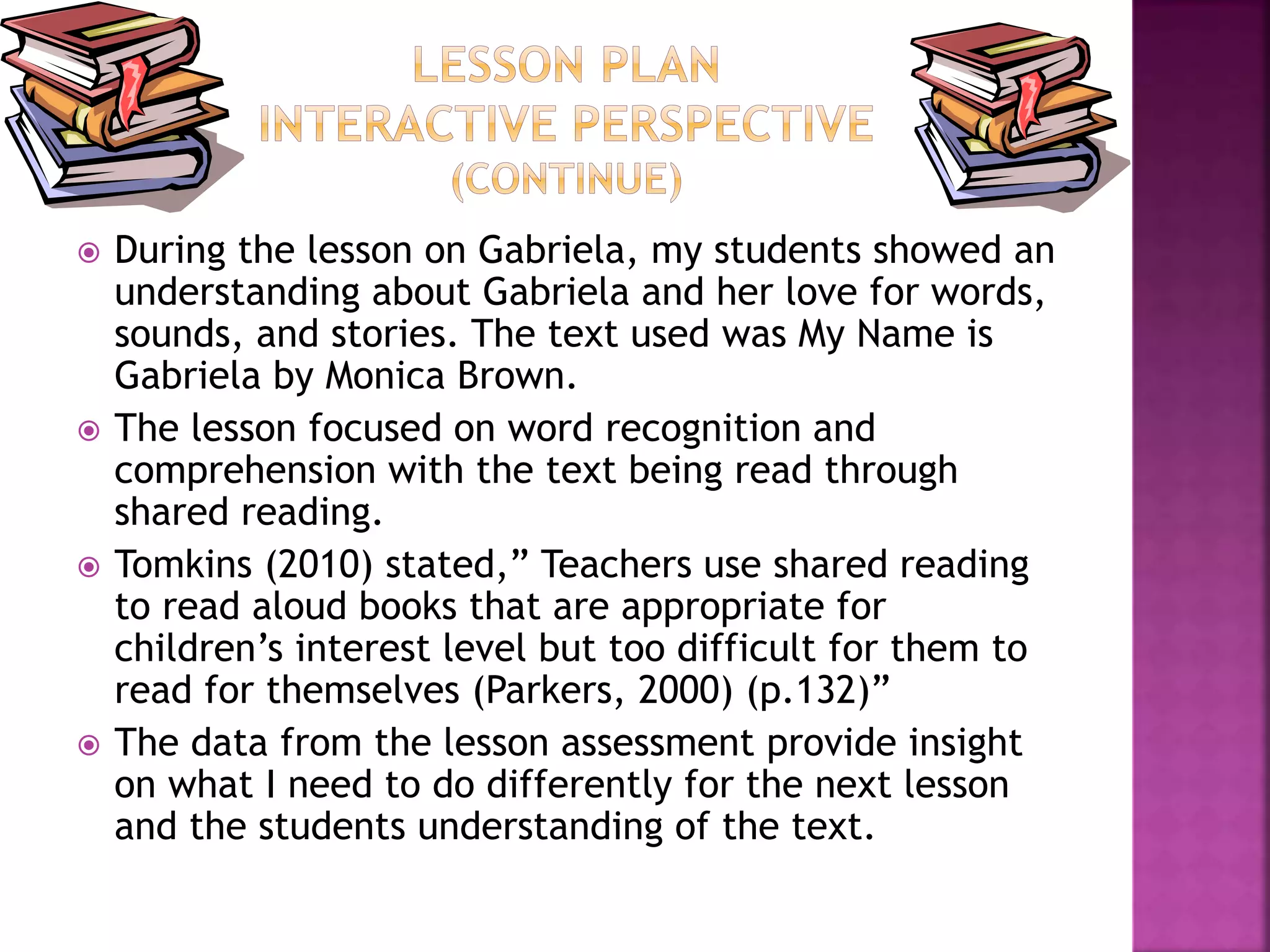


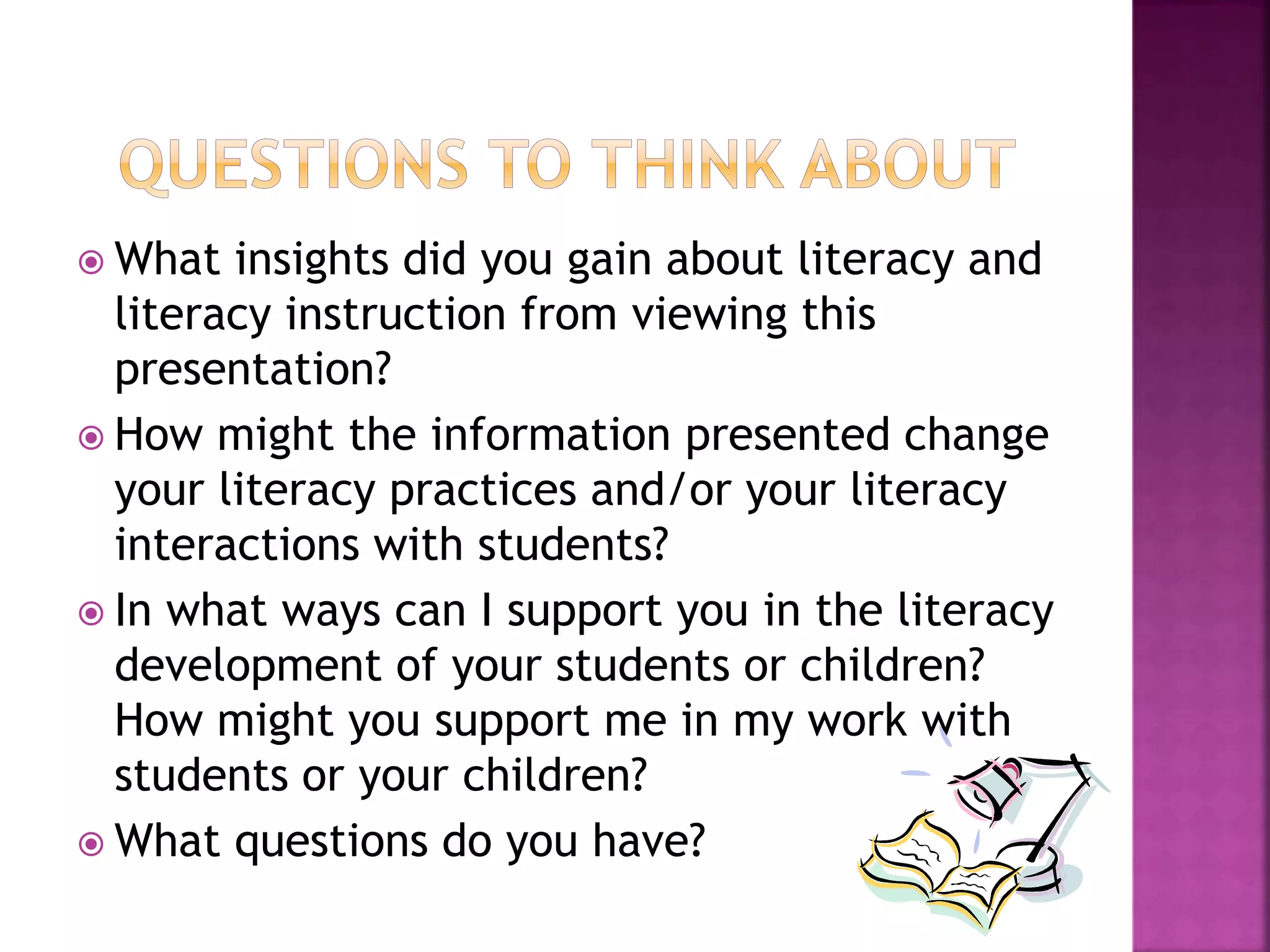
![ Afflerbach, P. (2012). Understanding and using
reading assessment, K–12 (2nd ed.). Newark, DE:
International Reading Association.
Afflerbach, P., Pearson, P. D., & Paris, S. G. (2008).
Clarifying differences between reading skills and
reading strategies. The Reading Teacher, 61(5), 364–
373.
Brown, M.(2005) My Name is Gabriela.
Clyde, J. A. (2003). Stepping inside the story world:
The subtext strategy—a tool for connecting and
comprehending. The Reading Teacher, 57(2), 150–160.
Laureate Education (Producer). (n.d.). Analyzing and
selecting text. [Video file]. Retrieved from
https://class.waldenu.edu
Maccarone, G. (2013) The Three Bears: An Alphabet
Book. Scholastic, Inc.](https://image.slidesharecdn.com/literateenvironmentanalysis-141209165726-conversion-gate01/75/Danielle-Leonard-Literate-Environment-Analysis-12-2048.jpg)
